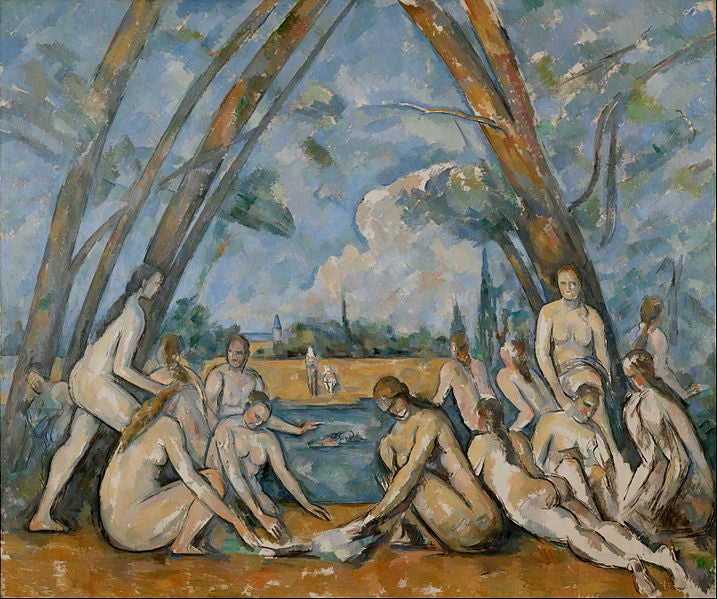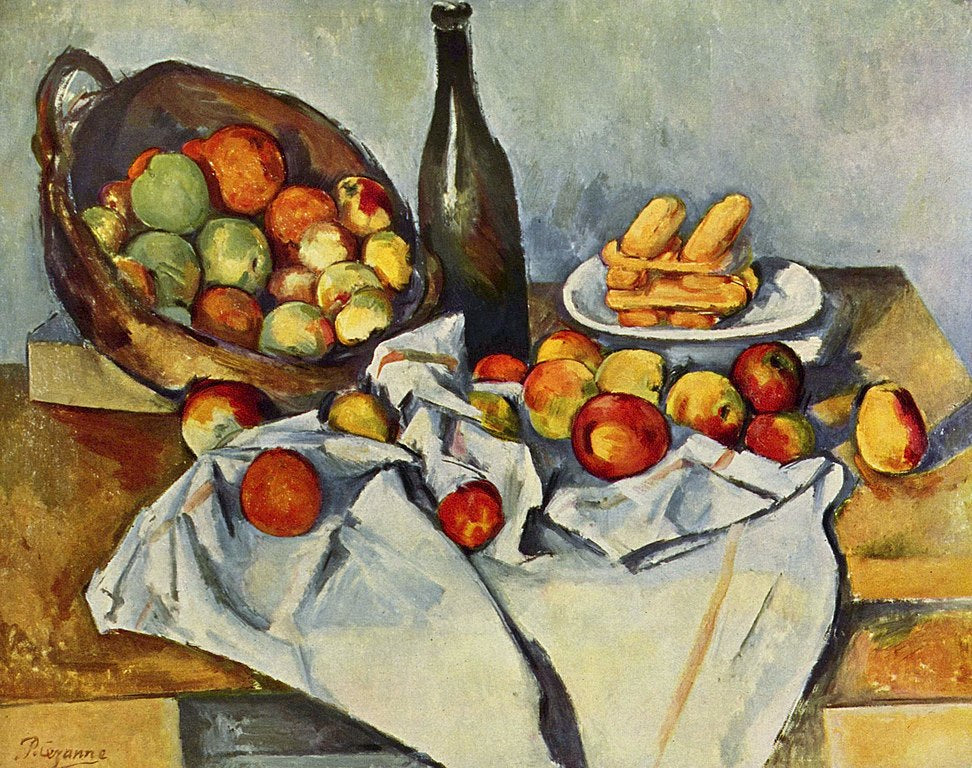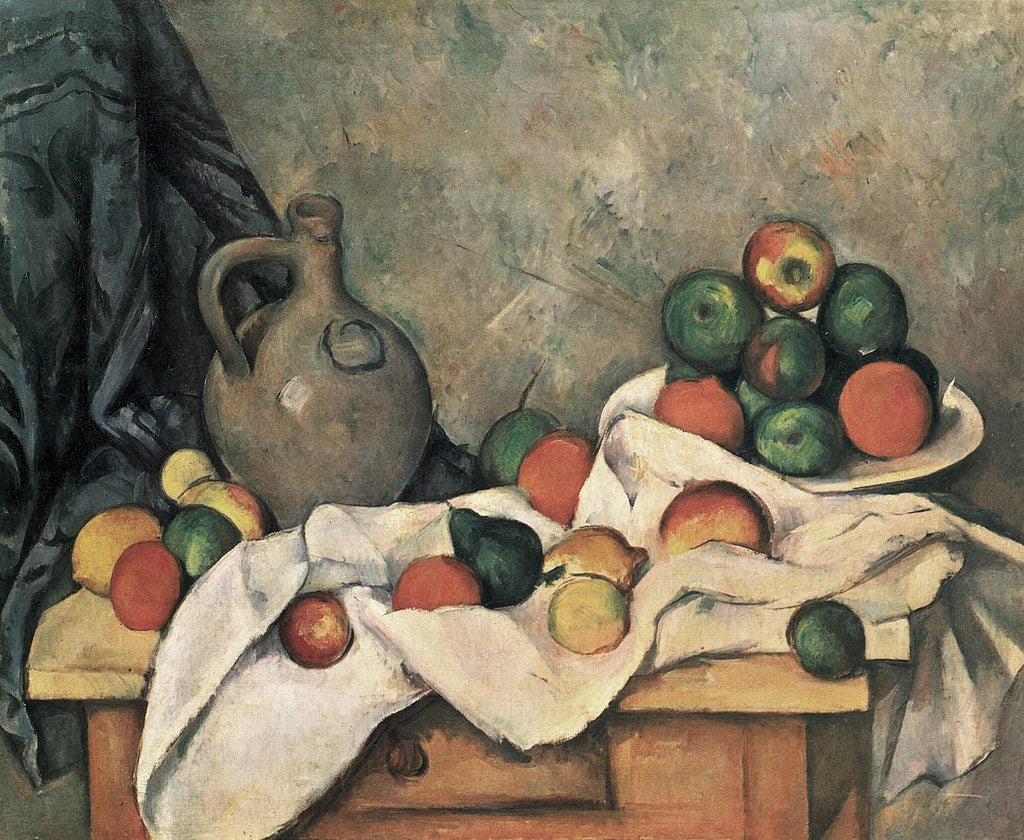Paul Cézanne is widely regarded as one of the most influential artists in history. His contribution to 19th century art is so significant that he has been called the "father of modern art". A key figure in the Impressionist movement, Cézanne's work often reflects his love of nature and its unparalleled beauty. He combined a unique combination of bold brushstrokes with an updated form of classical painting, creating an exciting new style. Cézanne's brilliant use of colour and perspectivist approach had a considerable impact not only on his fellow Impressionists, but also on later Modernists such as Matisse and Picasso. He thus revolutionised art forever, influencing generations of artists who led the way with his innovative vision.
His distinctive style, often described as post-impressionist, is characterised by coarse brushstrokes, a bright colour palette and the use of geometric shapes to render three-dimensional figures. His most famous painting, "The Card Players", examines the complexities and nuances of human interaction in a formal composition of two men playing cards at an outdoor table. Another well-known work, "Mont Sainte-Victoire", creates a dreamlike atmosphere with its bold lines and warm hues. With his unique approach to scale, colour and realism, Cézanne managed to capture the essence of nature like no other artist before him, making him a titan in the art world.
The card players

For much of the 1890s, Paul Cézanne lived at his father's estate in Aix-en-Provence, where he painted local landscapes and the people who worked on the property. In this a href="/en/collections/scene-de-genre" target="_blank" title="Scène de genre">genre scene, Cézanne shows a group of farmers playing cards, one of five paintings he devoted to this subject. In this, the largest and most ambitious of the series, Cézanne gives these humble figures an imposing presence, depicting them on a scale usually reserved for larger subjects such as history or mythology.
Date of the work : 1892
Original dimensions : 135.3 × 181.9 cm
Place of conservation : Musée d'Orsay, Paris, France
The large Bathers

Considered by many to be Cézanne's absolute masterpiece, the subject matter and technique used are completely different from the norm of works the painter produced during his artistic career. The artist wanted to create art that would last forever. The women are painted with great thickness and fit perfectly into the overall context. The bathers represent a tribute that Cézanne decided to pay to the great masters of the past, such as Titian and Rubens.
The strong luminosity of the whole painting is due to the colour being placed several times on the canvas, which allowed Cézanne to obtain the light necessary to achieve the final effect; the strong black lines that outline Cézanne's bathers, making them look like real statues, rather than painted ones. Cézanne's message was immediately heeded by other great names in the art world, most notably Picasso, who at the same time and with a very similar technique brought his masterpiece Les Demoiselles d'Avignon to life.
Date of the work : 1898–1905
Original dimensions : 210.5 cm × 250.8 cm
Place of conservation : Philadelphia Museum of Art, USA
The Basket of Apples

In this still life, The Basket of Apples, there is a strange feeling of precarious balance; there are several parts with different balances, but when they are added together, they result in a completely balanced composition. In the central part of the painting, we see a tilted bottle and, to its left, a basket that is tilted in the opposite direction to the tilt of the bottle, which gives an impression of disorientation. To the right of the bottle is a plate with biscuits, which corresponds to the same direction as the right side of the painting.
The latter has nothing to do with the left side, since they do not correspond to each other, just as if the picture reflected two different points of view at the same time. All these details are not mistakes made by Cézanne, but an interesting experiment in perspective that succeeded perfectly, leading to a fundamental point in the transition from Impressionism to Cubism.
Date of the work : 1894
Original dimensions : 65 x 80 cm
Place of conservation : Art Institute of Chicago, USA
Curtain, Jug and Fruit Bowl

In Curtain, Jug and Fruit Bowl, a white jug, decorated with large flowers, is placed in the centre of the picture. On its sides, to the right and left, are two plates. The plate on the left is white with a linear decoration on the edge and contains five fruits. The plate on the right is smaller and contains only three apples. More fruit is placed behind the small plate and in front of the jug. On the supporting surface, some clothes hang over the edge. The cloth on the right completely covers the corner of the table and hangs over the edge of the picture. On the left, another pale cloth is wedged under the plate and hangs over the front of the coffee table.
This is one of the many still lifes painted by Paul Cézanne. In his still lifes, as in the one in the Hermitage, the objects are always those of everyday life. The jug, the two plates and the fruit are shown on a simple table with tablecloths and fabrics. In Cézanne's various paintings, the arrangement of the objects and the viewpoint change. The intimate character of these works reveals Cézanne's introverted character.
Date of the work : 1894
Original dimensions : 60 cm × 73.0 cm
Place of conservation : Collection privée
The Sainte-Victoire mountain seen from the Lauves

Cézanne painted the Sainte-Victoire Montagne from many different angles, including from the terrace of the Château Noir, from the Bibemus quarry, from his sister Montbriand's house north of Aix and others. In his series of paintings of the Mountain, he captures it at different times of the day, and in different seasons. The simplified drawings and the use of bright colours could be inspired by Japanese art, especially the images of Mount Fuji by Hokusai.
Cézanne created an oil painting of Mount Fuji in all perspectives that are in line with the 36 perspectives of Mount Fuji by Hokusai. Similarly, he used some of the compositional techniques used by the Japanese artist Ukiyo-e to create his work.
Date of the work : 1904
Original dimensions : 92 x 70 cm
Place of conservation : Philadelphia Museum of Art, USA





Très satisfaite du tableau
Avis du 01/03/2025, suite à une expérience du 19/11/2024 par Luisa P